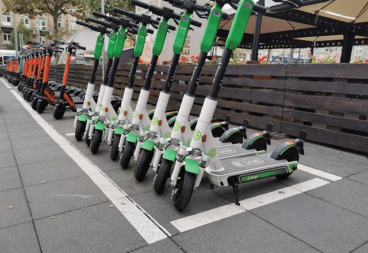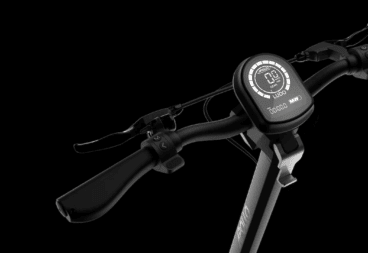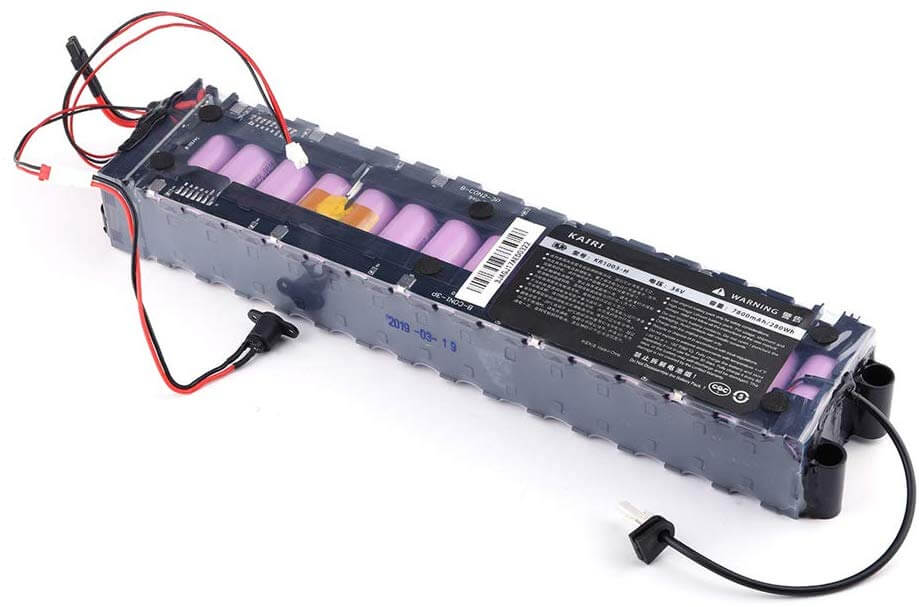
Learn how to prevent and stop electric scooter battery fires. Find out what can cause an electric scooter battery fire, how to identify battery damage and more!
Basically, everyone is familiar with what batteries are. Batteries are essential to our daily lives, powering everything from cell phones, to electric vehicles, to electric scooters. While they are incredibly convenient and reliable, batteries can also be dangerous if not used properly. You just need to search for battery-fail videos online to see how scary that situation can be. Battery fires are a very real hazard and can cause serious damage to property and even loss of life.
Batteries are widely available, with lithium-based batteries being the most popular. The reason that lithium-based batteries are so popular is because they offer a high energy density in a small package. This makes them ideal for use in a number of portable devices like electric scooters as they occupy minimum space, add minimum weight, and still deliver high power outputs, which is key in these devices. Apart from that, they are also environmentally friendlier than most other battery types and can be recharged multiple times.
However, the use of lithium in batteries also introduces a safety hazard, as the lithium used is a very reactive alkaline metal that is highly combustible. And while lithium-ion batteries do not contain free lithium metal, they still do contain lithium-ion and other flammable electrolytes that may pose a risk.
It is also important to remember that any time you store large amounts of energy in a confined space, there is potential for release in an uncontrolled or violent manner. This can lead to the generation of heat, smoke, or even a fire, which is why it’s so important to carefully manage the life cycle of batteries and pay special attention to safety and fire/explosion issues.
While lithium battery fires are relatively rare, they can be extremely dangerous when they do occur. In order to prevent battery fires, it is important to understand how these batteries work, what can trigger a fire incidence, and ways of preventing and stopping a fire in case it happens.
Evidence of Lithium Battery Related Fires
Lithium batteries are rated as some of the safest options, so why are we talking about battery fires? Well, while these batteries are generally considered safe, there have been some isolated reports of fires and overheating. Let’s look at some evidence.
In 2018, the U.S. Consumer Product Safety Commission released a report detailing more than 4,232,808 incidents of product recalling due to the fire or overheating risk involved with lithium-powered products over a five-year period. This included 483 types of products, ranging from electric scooters to laptop computers, with 500,000 hoverboards and a few electric scooters being recalled between 2012 and 2017.
There have also been several high-profile incidents involving battery fires, such as the 2019 MacBook Pro recall by Apple Inc. Over 432,000 MacBook Pro laptops were recalled in this recall due to the risk of battery fires. In 2017, Samsung recalled its Galaxy Note 7 smartphone (2.5 million devices globally) due to numerous reports of battery fires.
While the number of incidents is relatively small compared to the millions of lithium-powered products in use, it’s still important to be aware of the potential risks and exercise caution when using any battery-powered product. Fortunately, the number of recalls and incidents has also been dropping in recent years as manufacturers adopt better ways of designing and building these batteries.
What Type of Batteries Do Most Electric Scooters Have?
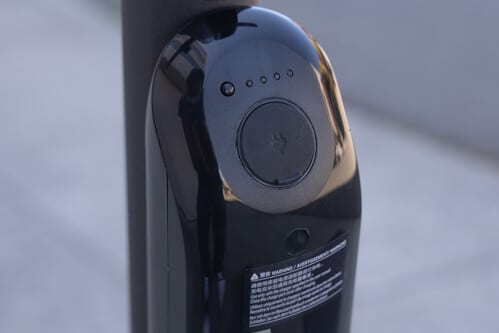
Most electric scooters on the market use either lithium-ion batteries or lead-acid batteries. While both types of batteries have their own pros and cons, lithium-ion batteries are generally considered the better option.
The obvious difference between the two batteries is the material and technology used. The lithium battery is more expensive, more efficient, and has a higher energy density than lead-acid batteries– (250-670 Wh/L vs. 80-90 Wh/L ). This means you can get more power out of a lithium battery than a lead-acid one, making it a better choice. Apart from this, lithium batteries shine over their lead counterparts by:
- Having a lower charging time
- Lower self-discharge rate of around 1.5-2% per month against 4-6% of lead-acid batteries
- Much longer lifespan than lead-acid batteries
- Lead-acid batteries also require more maintenance than lithium-ion batteries. They must be regularly cycled (discharged and recharged) to maintain their battery life.
- They are smaller and weigh less. This is a huge benefit for electric scooters, as dimensions and weight should be kept to a minimum.
That being said, it’s obviously clear which battery is the winner: Lithium-Ion Battery. However, companies like Razor still lean heavier on using lead-acid batteries, proving there’s still a case for the alternative, i.e., lower cost.
However, there are some downsides to using li-ion batteries in scooters. One is that they’re extremely sensitive to temperature and are inherently flammable. This means that lithium-ion batteries tend to degrade much faster when exposed to temperature extremes – either hot or cold. Exposure to temperatures outside the operating condition can lead the lithium battery to fail and may also become fire safety hazards.
To fully grasp how these fires occur, you need to first understand how batteries work.
How do Lithium-ion Batteries Work
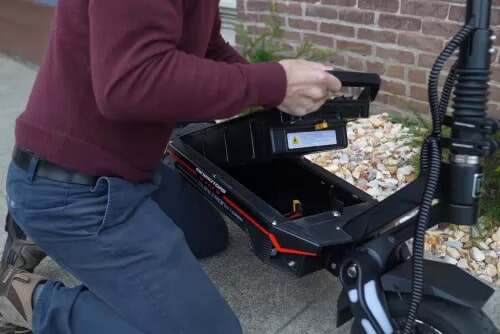
Lithium-ion batteries are composed of individual cells stacked together in a module. Each cell contains:
- An anode that is mostly made from graphite
- A cathode that is made from an oxide of lithium, mostly lithium cobalt oxide (LCO)
- A micro-permeable separator that separates the content of the anode and cathodes and only allows the flow of lithium ions through it.
- An electrolyte, which is a lithium-based salt that carries the lithium ions from the anode to the cathode and vice versa through the separator.
In layman’s terms, lithium-ion batteries work by shuttling lithium ions and electrons back and forth between the positive and negative electrodes through the separator and outer circuit. This movement of ions and electrons creates an electrical current that can be used to power electronic devices.
The positive electrode releases some of its lithium ions when the battery is charging. These ions move through the electrolyte (present in the separator) to the negative electrode. The ions remain there all through the charging process.
At the same time, the electrons produced during the formation of the lithium-ion flow from the positive electrode to the negative electrode. However, they take a longer path around the outer circuit as the separator cannot allow electrons to pass through it. The electrons and ions then combine at the negative electrode, forming lithiated carbon.
When no more ions are flowing, the battery is considered to be fully charged.
During discharging, the anode (negative terminal) that had the deposited lithium metal releases it in the form of ions which migrate via the electrolyte to the cathode (positive terminal). The electrons also migrate back to the cathode, but since they cannot permeate through the separator, they have to do so via an alternative route, which is an outer circuit (in this case, the scooter’s electric circuit). This movement of ions and electrons is what powers the electric scooter. The battery will continue operating until all the ions have successfully migrated to the cathode. At this point, the battery is said to be fully discharged and will require to be charged.
As you can see, this is a process that involves several different chemical reactions and needs to be done in a controlled environment without any interference and malfunctions. Any change in the operating conditions might alter the reactions, which could lead to unwanted occurrences.
Now that we know how a battery works, we can dive into how it may cause a fire.
What Causes an Electric Scooter Battery to Catch Fire?

Electrochemical reactions generate and store electrical energy in a lithium-ion battery. Suppose the structure of the battery is compromised, such as when the electrolyte separator is breached or damaged. In that case, the different chemicals can mix and allow the electrons and ions to freely move between the cathode and anode, i.e., a short circuit, which creates a spark or excessive heat. If the flame is not contained or the heat dissipated faster than the production, the lithium batteries catch fire.
This is made worse by the fact that the chemicals used in lithium batteries can self sustain a fire.
The electrolyte comprises lithium salts and organic solvents, which are highly flammable and pose a fire risk. Additionally, the cathode is also made of an oxide of lithium, meaning there is a high chance that oxygen can be released as a byproduct if exposed to specific stressors.
In short, most battery fires result from defects in the battery structure and poor charging practices. Here are a few examples:
- Electrical short circuits
- Overcharging
- Manufacturer defects and design flaws
- Abnormal or improper usage of the battery
- Rapid discharge
- Use of low-quality components in the battery
- Mechanical damage
- Charger issues, among others
The process by which the fire ignites is called Thermal Runaway, and we’ll demystify what that entails below.
What is Thermal Runaway
A thermal runaway is a chain reaction caused when the battery overheats, causing the internal pressure and temperature of the battery to rise at a quicker rate than it can be dissipated. The temperature of the battery cells can increase to the point where they uncontrollably self-ignite.
A thermal runaway can happen when there is a sort of failure in the battery, such as a short circuit or thermal failure. Once the battery goes into a thermal runaway, the internal temperatures rise within a fraction of a second, and the stored energy is released uncontrollably. The heat causes the chemicals in the battery to break down, which releases more heat. This increases the temperature, and eventually, the battery can catch fire/self-ignite. Thermal runaway can also result in the ejection of toxic gasses, smoke, and other particulates in a violent manner.
How Do I Know if an Electric Scooter Battery is Damaged?
If you’re concerned that your lithium-ion battery might be damaged, there are a few signs to look out for:
- Excess Heat: It’s normal for lithium batteries to generate heat when operating or charging. But if your scooter battery feels extremely hot oftenly, then there is a high chance it’s defective.
- Odor: If you notice a foul smell ( a faint burning smell) coming from your battery, it’s a good indication that the battery is going bad. The odor is caused by the release of pressurized gasses, which is a byproduct of unintended chemical reactions that takes place inside the battery.
- Visible leakage: Visible leakage from a battery is a serious problem that should be addressed immediately. If left untreated, the leaked electrolytes can cause extensive damage to both the electrical system and the body of the scooter. In addition, the leaked contents are highly corrosive and can eat through metal, paint, and plastics.
- Swelling: Another sign is bulging. If the battery is visibly swollen, it’s also likely damaged and should be replaced.
- Noise: If the battery produces strange hissing and popping sounds during operation, it might be a tell-tale sign that it’s failing
If you notice any of these signs, it’s important to stop using the battery and get it replaced as soon as possible. Continuing to use a damaged lithium battery can be dangerous and may lead to fires or explosions.
How do you Prevent Electric Scooter Battery Fire?
According to the Occupational Safety and Health Administration (OSHA) and the National Fire Protection Association (NFPA), there are several ways to prevent fires, including:
Observing Proper Charging Practises
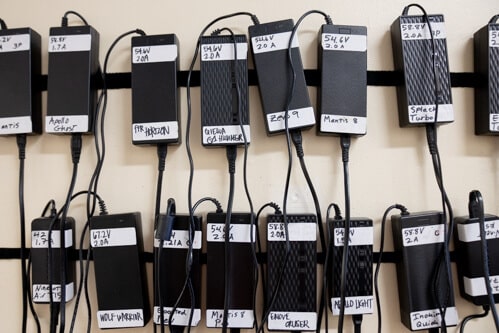
- First, always follow the manufacturer’s instructions found in the user manual when using or charging batteries. This will help ensure that you use the battery safely and correctly.
- Only use the charger that came with your device. Some aftermarket chargers can be unsafe and may not meet the proper safety standards. Each battery has a specific charging voltage that needs to be adhered to.
- Always use rechargeable lithium batteries from reputable manufacturers and retailers. Counterfeit or knock-off batteries may look identical to authentic batteries, but they often don’t meet the same safety standards. For example, they may have lower-quality materials that can lead to overheating and fire.
- Charging should be conducted at a temperature between 40°F- 110 °F (4°C- 43°C ); charging at a lower or higher temperature than this can trigger some unwanted chemical reactions in the battery cells leading to a fire or explosion.
- Never overcharge your rechargeable batteries; only recharge them for the amount of time specified by the manufacturer. When batteries are overcharged, they can heat up and catch fire easily. So be sure to unplug batteries once they are fully charged. Thankfully most electric scooter batteries have a Battery Management System in place to prevent lithium battery fires.
- Never leave your electric scooter unattended while it is charging. Many battery fires occur when people leave their devices plugged in and unattended for extended periods of time. If you must leave the house or go to sleep while your batteries are charging, be sure to unplug them first.
- Watch where you charge your electric scooter. It should be away from flammable surfaces that can easily catch fire in case the battery malfunctions. This includes things like paper, fabric, and vinyl wood. If possible, try charging the battery in a fire-safe charging bag.
- During charging operations, it is normal for a healthy battery to be slightly warm. However, if you notice the battery becoming excessively hot, releasing smoke, or emitting a smell, immediately disconnect it from the power source. These signs could indicate that the battery is overheating and could potentially catch fire.
When in Use
- Do not overload the battery. When a battery is overloaded, it can overheat and catch fire. Before adding any aftermarket additions to your scooter, it is important to check the manufacturer’s instructions to ensure that the device does not require more power than the battery can safely provide.
- Avoid exposing the battery to water and other liquids as they may cause corrosion or damage to the delicate internal components of the cells, which can eventually trigger a lithium battery fire. Avoid riding your scooter in wet conditions if it is not IP rated.
- Avoid operating a battery that has obvious signs of damage. Replace the battery immediately.
- Only use the battery within the manufacturer’s recommended operating temperature.
Batteries are designed to operate within a specific temperature range in order to function properly. Most manufacturers recommend an operating temperature range of 4°F to 140°F (-20°C to 60°C). However, if we’re being realistic, riding in -20°C/ 4°F temperature is not even comfortable. Using the battery outside this range can shorten its lifespan, decrease its performance, and increase the chances of battery failure.
Storage Practices
- Avoid storing your scooter in areas that have relatively high temperatures and high humidity. Always store the scooter batteries in a cool, dry place away from direct sunlight. The recommended storage temperature is about 59° F (15° C), and the ideal range is between 32°F(0°C) to 86°F ( 30°C). High temperatures are likely to increase the battery’s self-discharge rate and the possibility of a failure, which can lead to a fire. Never store the scooter battery at a temperature greater than 60 °C as it may trigger a thermal runaway to occur.
- Store your scooter battery in a dedicated space away from any hazardous and flammable materials.
Maintenance and Disposal Practises
- Make sure you regularly inspect your electric scooter’s batteries for any signs of damage. If you notice anything unusual, such as swelling, leakage, or discoloration, discontinue use immediately and replace the battery.
- Be sure to recycle your lithium-based batteries properly. Many communities have special collection facilities for recycling these batteries. Alternatively, you can contact your device manufacturer to see if they offer a take-back program as they do for some electric cars.
- Never dispose of lithium-ion batteries in a fire.
Finally, it is important to have working smoke alarms in your home so that you can be alerted as early as possible in the event of a fire.
How do you Stop an Electric Scooter Battery Fire?
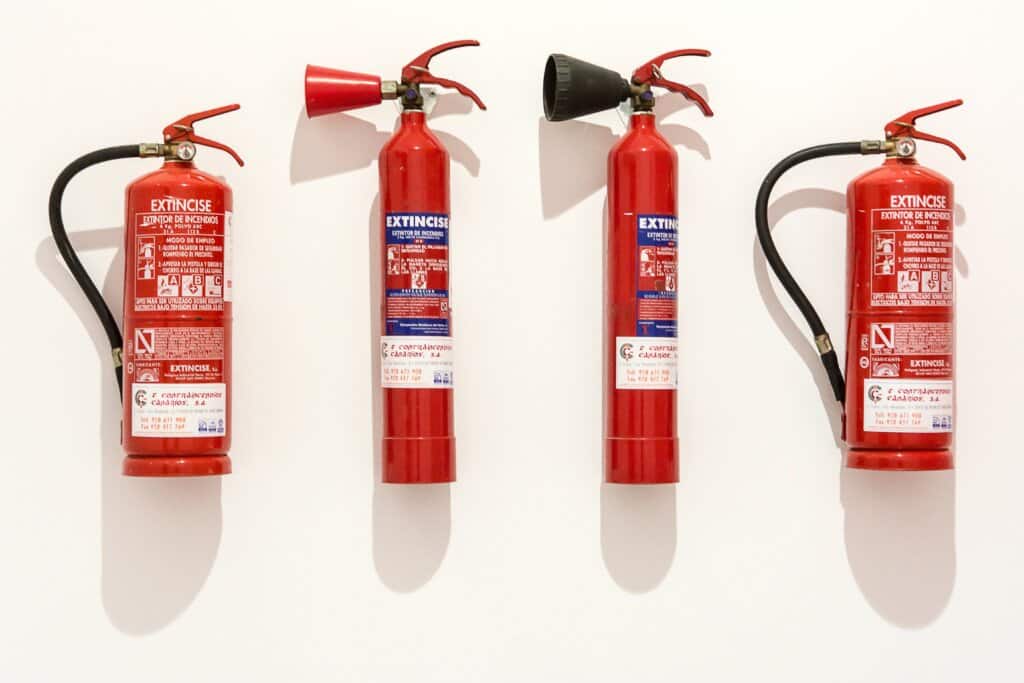
If you have ever experienced a house fire, you know how quickly it can get out of control. A battery fire is no different. In fact, due to the flammable chemicals involved, they can be even more dangerous. So, how do you stop a battery fire?
If you think your device is going to catch fire, the best thing to do is to keep yourself and anyone else away from it. There might be a risk of explosion or toxic fumes, so it’s important to be as far away as possible. If there are any flammable materials nearby, it’s also important to remove them so that the fire doesn’t have a chance to spread. If the fire is already out of control, don’t try to extinguish it yourself. It’s more important to focus on getting yourself and others to safety. Emergency services will be able to deal with the fire more effectively.
However, if the fire is small and manageable, the best way to extinguish it is by using a standard ABC or BC dry chemical fire extinguisher. These extinguishers can be found at most hardware stores. If you do not have a Class B fire extinguisher, you can try to smother the fire with water, sand, or dirt, but only attempt this if you are formally trained in basic fire fighting techniques.
Lithium-ion battery fires are classified as Class B flammable liquid fires as they involve burning of a flammable electrolyte. It cannot be labeled as a class D fire (combustible metals) as the lithium-ion batteries do not contain actual lithium metals; thus, a class D extinguisher will not be effective in such a situation.
Using water to put off lithium-ion battery fires is a highly controversial topic with many schools of thought. Lithium is a very reactive metal and reacts violently with water. However, contrary to what people think, lithium-ion batteries contain really small traces of elemental lithium, which cannot trigger a major violent reaction, especially when dealing with small fires.
For small fires flooding the battery with water has proven to be an effective method. However, just to be on the safe side, it’s advisable to use the designated fire extinguisher for these kinds of fires.
Major battery fires are often extinguished by water. The water cools the temperature of the lithium salts to sub ignition ranges (below 500°C ), preventing them from igniting again. The lithium salts are self-oxidizing and cannot be starved of oxygen, so some traditional methods of extinguishing fires would not work.
How Common are Scooter Battery Fires

A battery catching on fire is newsworthy, especially if it gets recorded. One fire can cause an internet-wide sensation and give the impression that battery fires are a common occurrence. They are not. The seemingly many videos on the internet are isolated cases that get blown out of proportion through the resharing network, making the situation look more grave than it is. A good example is the Galaxy Note 7 fire that had everyone thinking the phones were exploding at the speed of unpopped popcorn on hot oil. For scooters, the statistics are even lower as most come equipped with battery management systems. Therefore, while they do occur, lithium battery fires are not as common and maybe just 1 for every 10 million.

